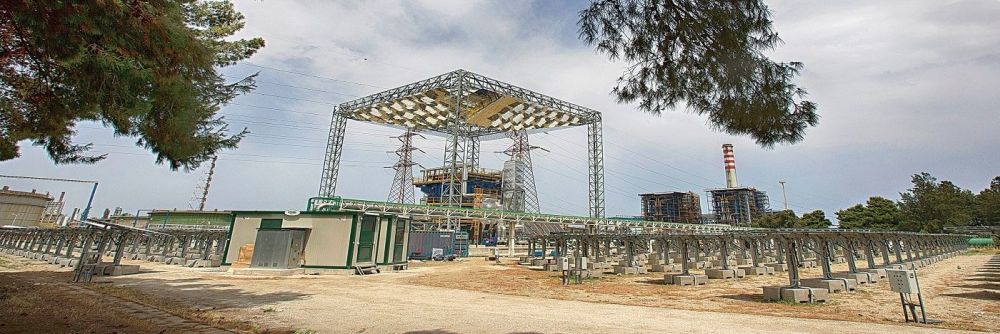| Duration: | 04/2022 - 03/2025 |
| Contracting Authority/ Sponsors: | Bundesministerium für Wirtschaft und Klimaschutz |
| Project Partners: | Plasma Electronic, Magaldi Power S.p.A |
| Project Focus: |
SOLBEADO – Development and testing of secondary reflectors for a beam-down tower power plant.
In the SOLBEADO project, a secondary mirror for beam-down solar tower power plants is to be developed so that, on the one hand, the reflection is increased, and, on the other hand, the efficiency of the power plant is improved. In addition, research will be conducted to determine whether durability at higher operating temperatures can be achieved. Beam-down power plant technology is becoming increasingly important; some demonstrators can be found in Italy and in Masdar (United Arab Emirates), as well as in China, where a 50 MW power plant is currently being commissioned.
The efficiency of a beam-down power plant is directly linked to the reflectance and performance of the secondary reflector since the complete solar radiation is directed to the receiver via the secondary reflector. Currently, aluminum secondary reflectors are used, which have a reflectance of about 90 percent. This means that the reflection is not optimal. At the same time, stability problems occur at temperatures above 200 ° C, so that the operating temperature of the secondary mirror is currently limited to 200 ° C. The secondary reflector developed in this project is intended to address both challenges: On the one hand, an increase in reflection to at least 93 percent is to be achieved (as the reflecting coating is silver based); on the other hand, resistance at higher operating temperatures is also to be achieved (as the substrate is steel). In the project, the solar flux density and the temperatures of the secondary reflector are to be determined in optical simulations, and the solar field is to be re-optimized taking into account the targeted maximum operating temperature of 300 ° C to 350 ° C. Another important part of the project is testing a prototype reflector under realistic operating conditions: A secondary reflector demonstrator manufactured specifically for the project will be tested over 12 months. During this time, the reflectivity and durability of the reflector will be checked and analyzed on site in the test field as well as after disassembly. The project will generate measurement data and experience with the new secondary reflector coating, optimize and redesign a beam-down system to exploit potential efficiency and cost reduction opportunities. A techno-economic study will present the potential of the technology. The technology of high temperature resistant mirrors with very high reflectance is also very relevant for other applications in the CSP field, such as solar tower systems and Linear Fresnel collectors (LFC).
